fall inside a hole
Old, odd rails
First written April 9, 2024In the 1960s and 1970s there were some rail types that were either odd holdover pieces or fit a very particular niche.
Tansen Point Rail/Point Rail (たんせんポイントレール/ポイントレール) (1950s)
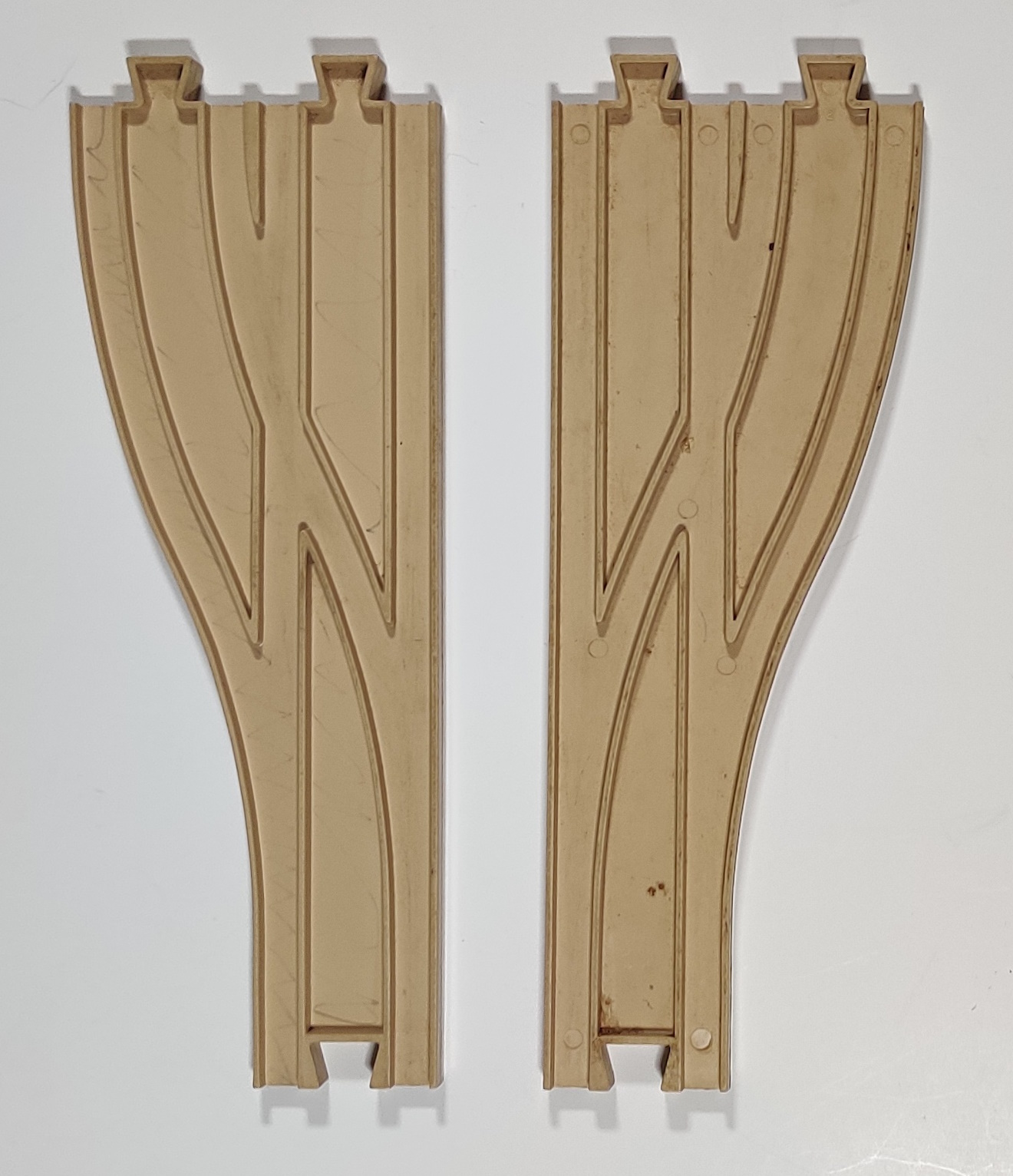
One of the holdover point designs from the Tot Railroad standard was this tight parallel track switch sold as たんせんポイントレール or "tansen" point rails, with tansen appearing to be an abbreviation related to single/double track points. This switch only moves the spur out about 38mm or the width of a rail, leaving two connected straight rails basically sharing the outer rail walls on the inside of the lines. In its original use with smaller wooden or later plastic trains this tightness was less of an issue but with larger Plarail trains there is not really any room for trains to pass, although a single train has no problem navigating the switch. Early Plarail (then still called by its original full name Plastic Rail) examples from before the introduction of battery trains in the early 1960s do not have a directional decider (like the pictured tan Tot Railroad original). The individual release of these deciderless points came as a pair of points with two short ramp pieces. This point rail was only produced in this one orientation, as were the Tot and Child Guidance Railroad versions.
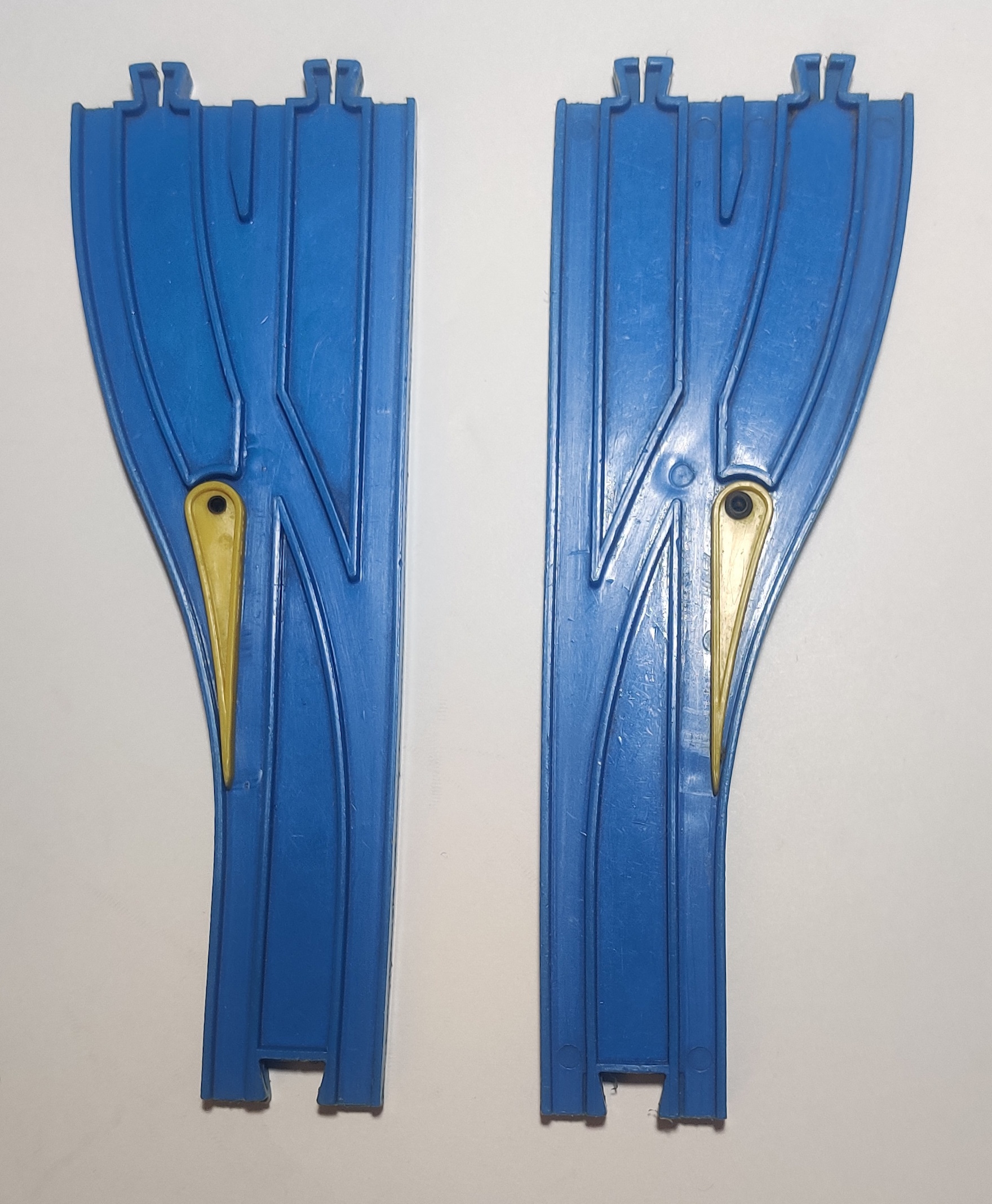
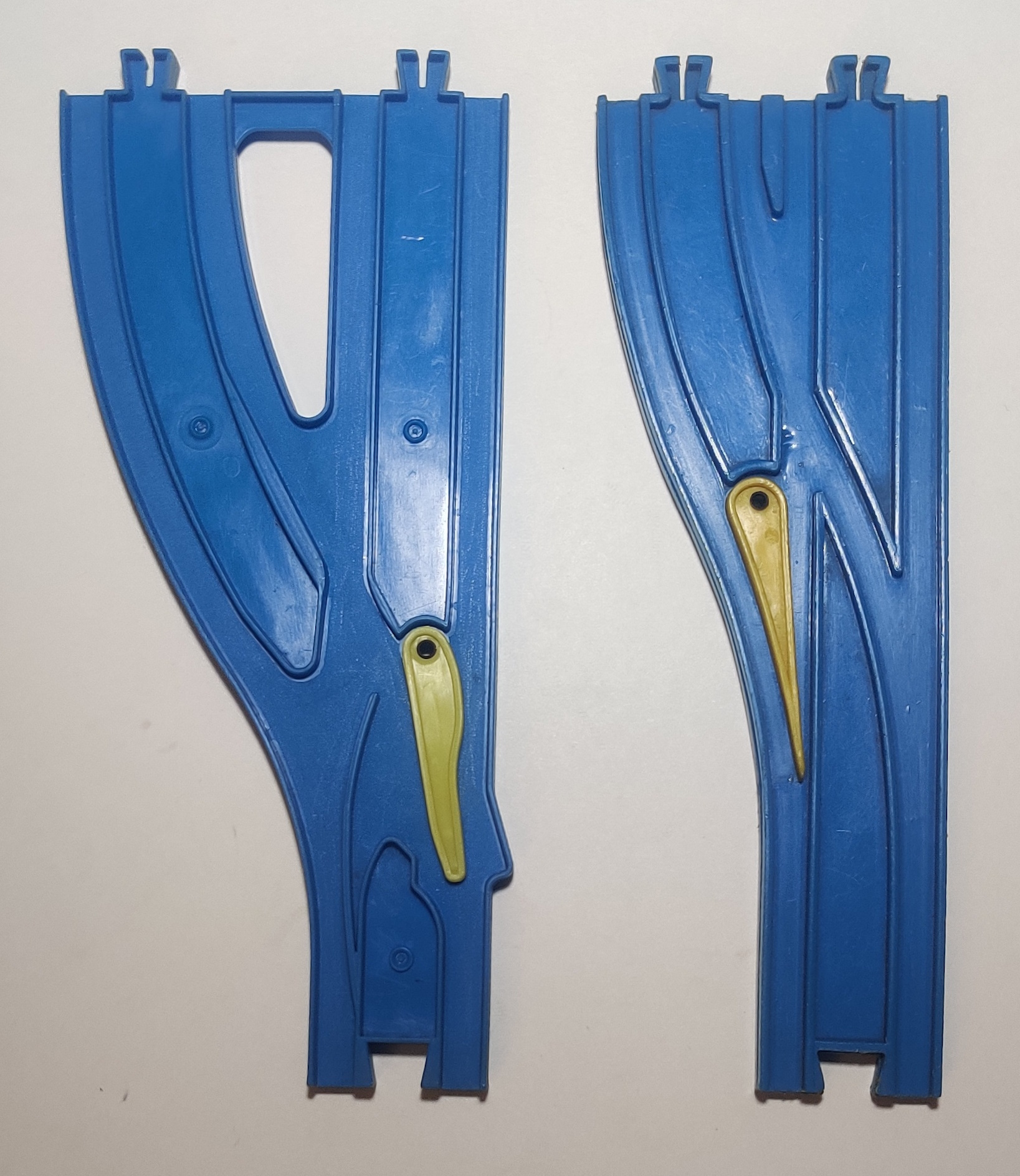
In the 1960s the switch was updated with a directional lever and it remained in the range even with the release of the double track standard in 1968 and the R-11 Turnout Rail and R-13 Single/Double Point Rail in 1974.


There are two variants of this rail with a decider, one of which is shorter and sold in late Plastic Rail and early Pla-Rail packaging with one of each style of Joint Rail and a longer style sold in Hikari-Go mark packaging without joint rails.
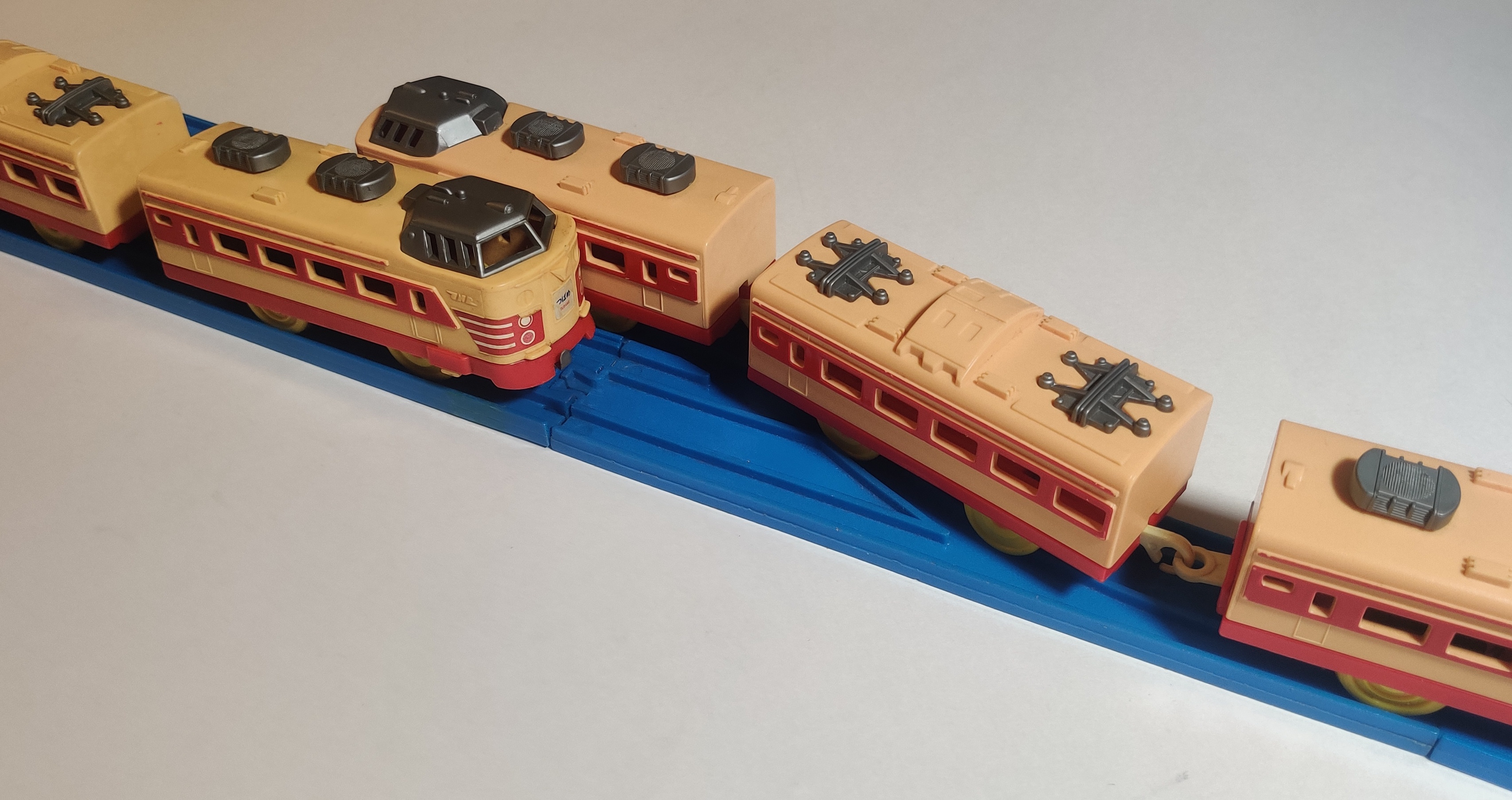
The rail even lasted long enough to get a roughtop variant in 1975 and the designation 6 under the 70s numbering scheme before going out of print. The two branches are too close for the Plarail loading gauge and two powered trains can not really pass beside each other but one train can navigate the point just fine.
Apparently, this rail occasionally appears in red. It does not seem that anyone in the Plarail collecting community currently knows where this rail comes from.
Yoke Rail (1950s)
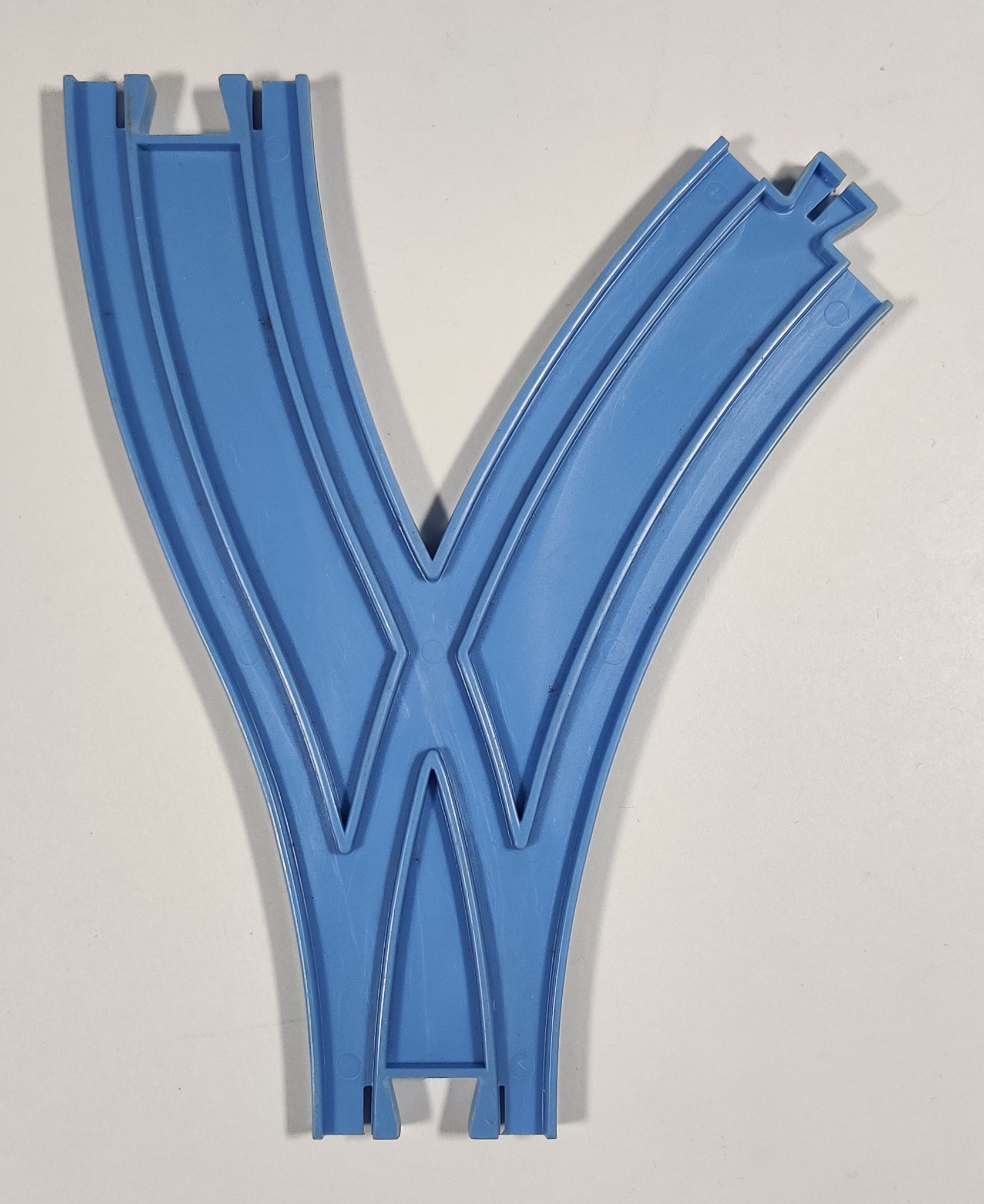
The design of this odd point rail is also a holdover from Tot Railroad. The pictured example is a later ~1958 light blue Playskool version of Tot Railroad considered to be the direct predecessor to the Plarail rail standard. This rail was only in print in the Plastic Rail era when tags did not have names of the products within on them. The Keystone instructions call this rail a "yoke" rail, and I can kind of see why. The Japanese individual release also includes two short ramp pieces.
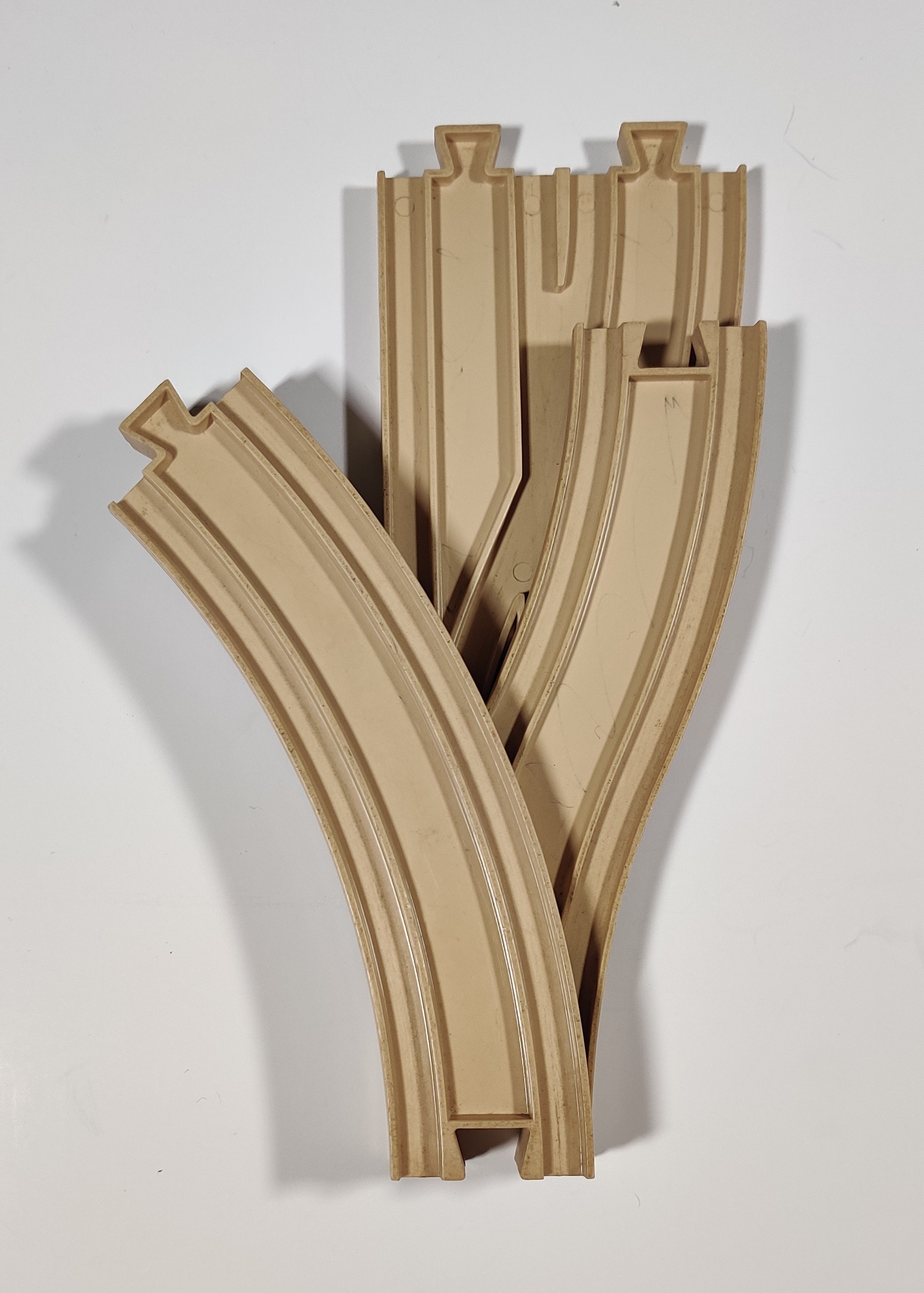
The key to understanding the use of this rail is to see that one branch more obviously forms a curve rail relative to the entrance of the point while the other branch displaces the rail over to the side by the same distance as the parallel "Tansen" point above, allowing for them to be used together in some layouts. Similar to the tansen point rail, the yoke was only ever produced in one orientation.
Y Type Rail (Y型レール) (1964)
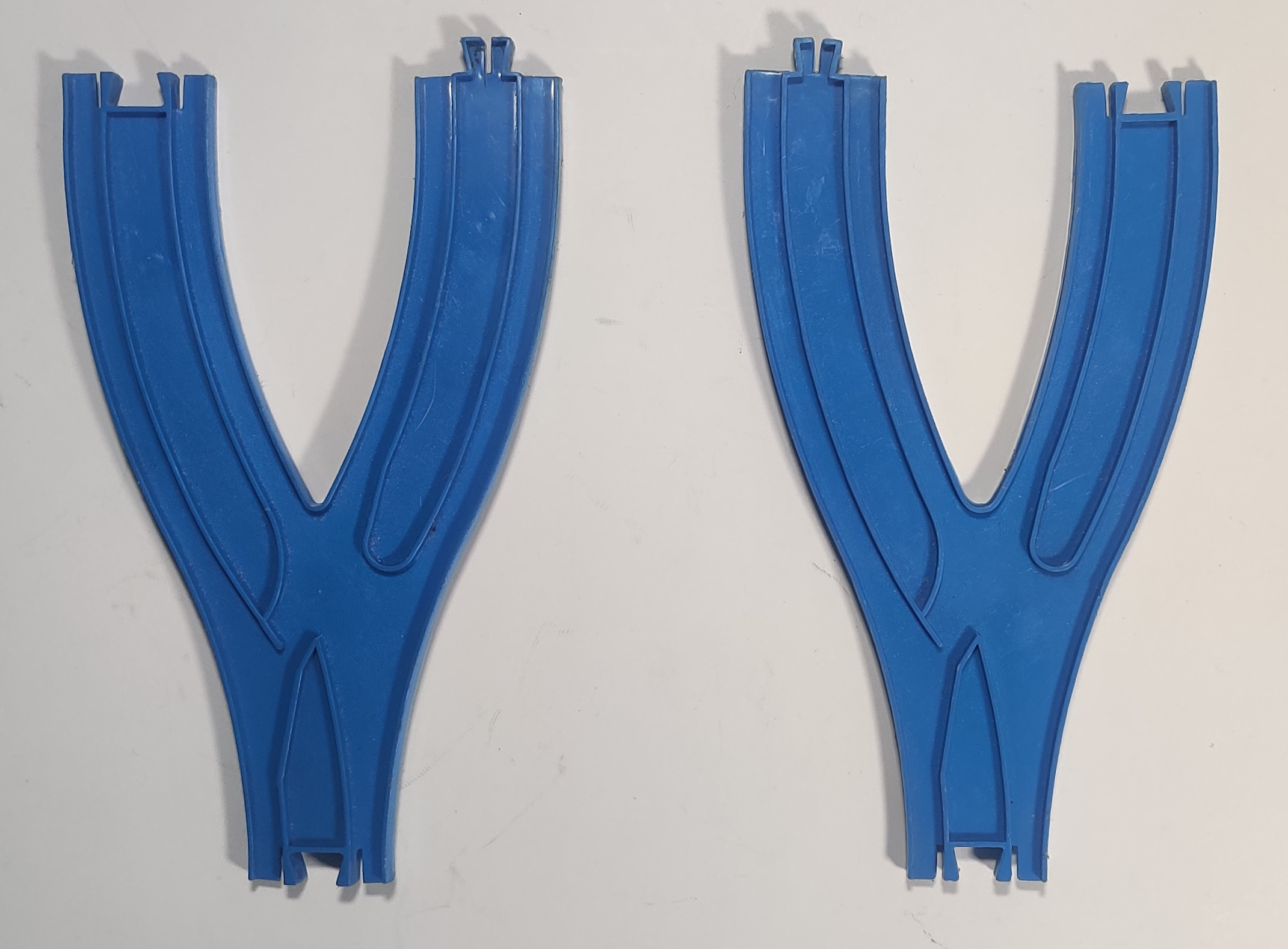
From around 1964 and into the 1970s these Y-type rails were used to switch a line apart into two wide tracks to surround an island station. This worked very well as a scene piece but the tooling of this rail is also cleverly molded to always send a train entering the rail off to the left, making it extra useful for transfer or relay stations. This "always to the left" molding means the switch can be flipped over to get the alternate outboard connector arrangement, although all the Y rails have a concave input.

Geometrically, this wide-stanced rail fits well with the old automatic transfer station, and the difference between the spurs of the switch allows for the use of regular Curve Rails on the inner line with Large Curve Rails on the outer to produce a nice curved separated section like shown to the left of the station setup above. Around 1969 a rail was developed to adapt between the new Fukusen or Double Rail Plarail standard and the Y type rail width, and the old blue two-piece U-Turn Rails were also the right width to be connected to the Y rail "standard."
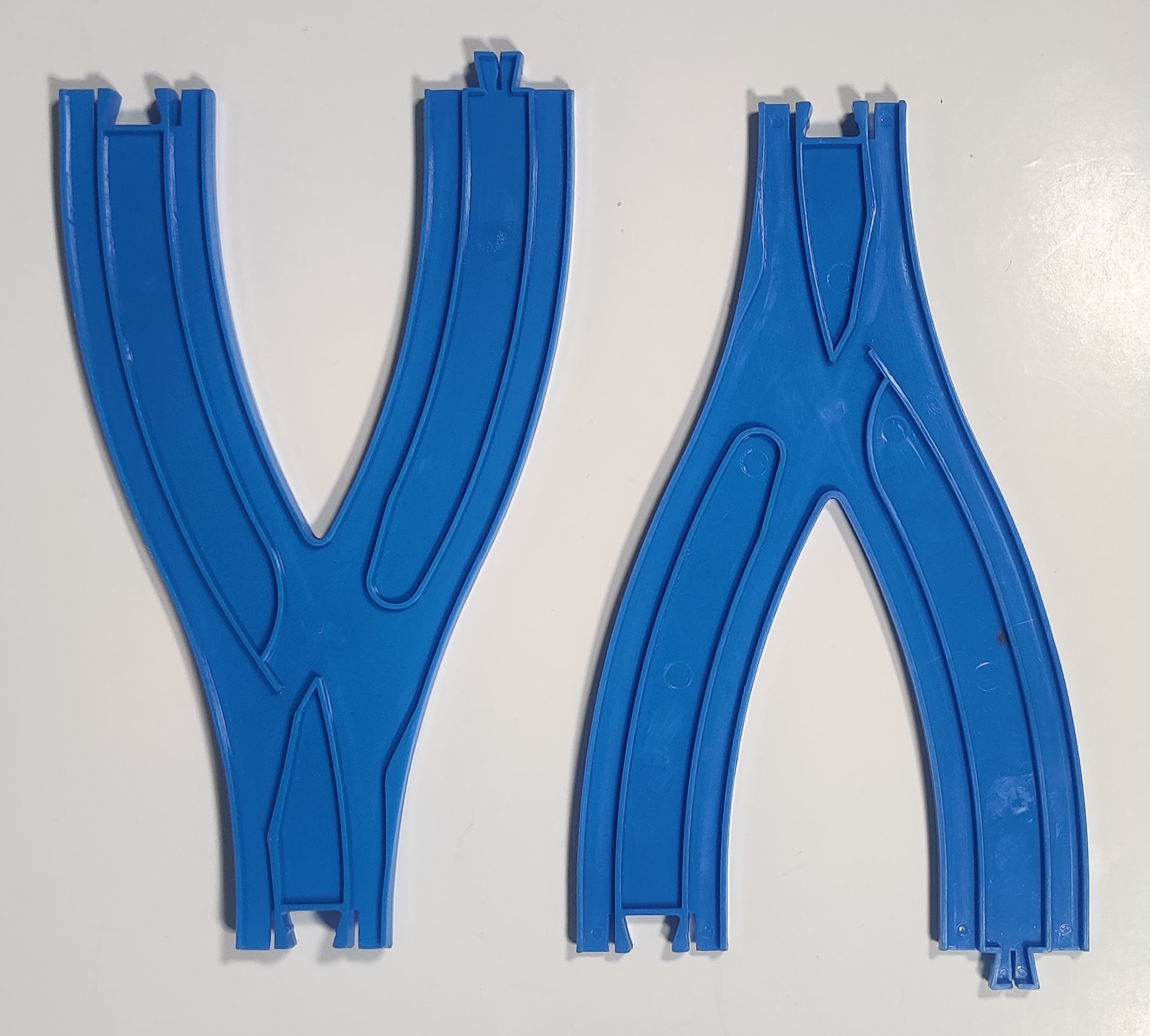
There are a few different toolings of this switch. A slight update to the tooling used in the 1972 D-51 Express Set added a bump to the outside rail to help direct trains to the left.
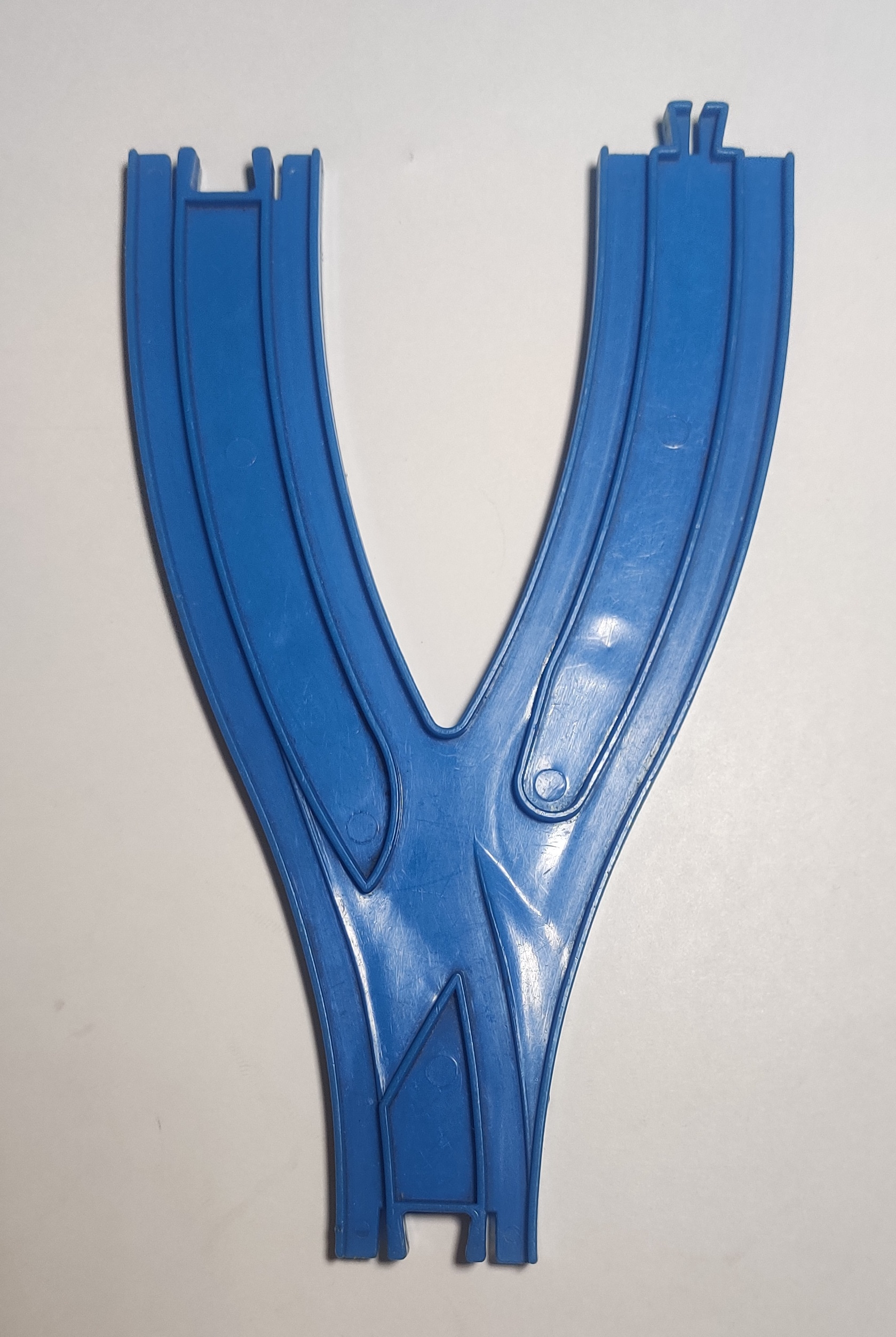
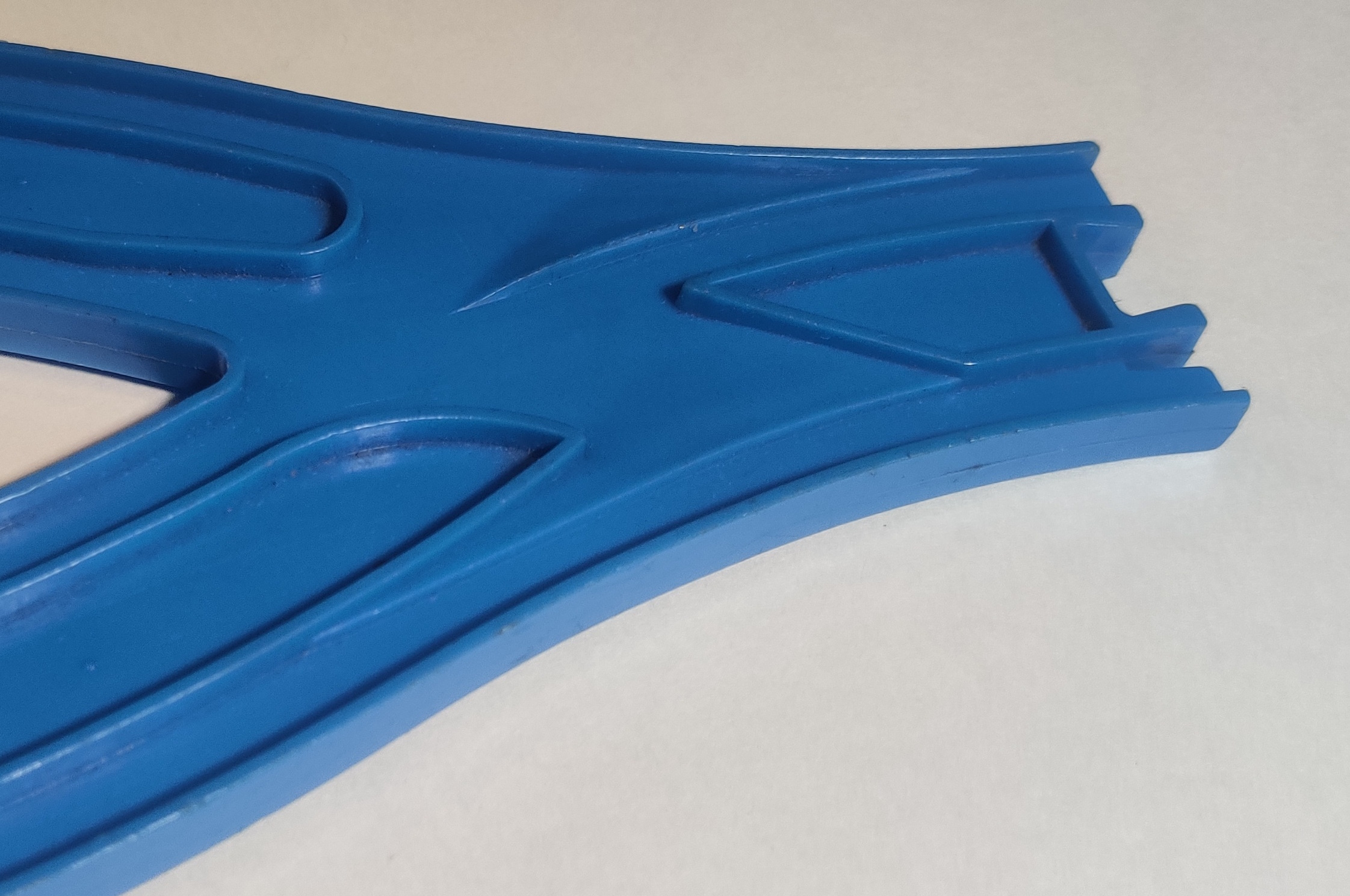
A later 1970s change added sloped portions to the rail surface. The individual releases of these switches came in pairs with one of each style of Joint Rail.
This improved version of the switch does seem to work more reliably. After being out of print since the mid 1970s it was used in an automatic transfer station set in 1982. In more modern times the newer automatic transfer stations use a similar type of Y rail that is more directly geometrically related to the double rail standard.
Automatic Station Double Rail Track (1969)
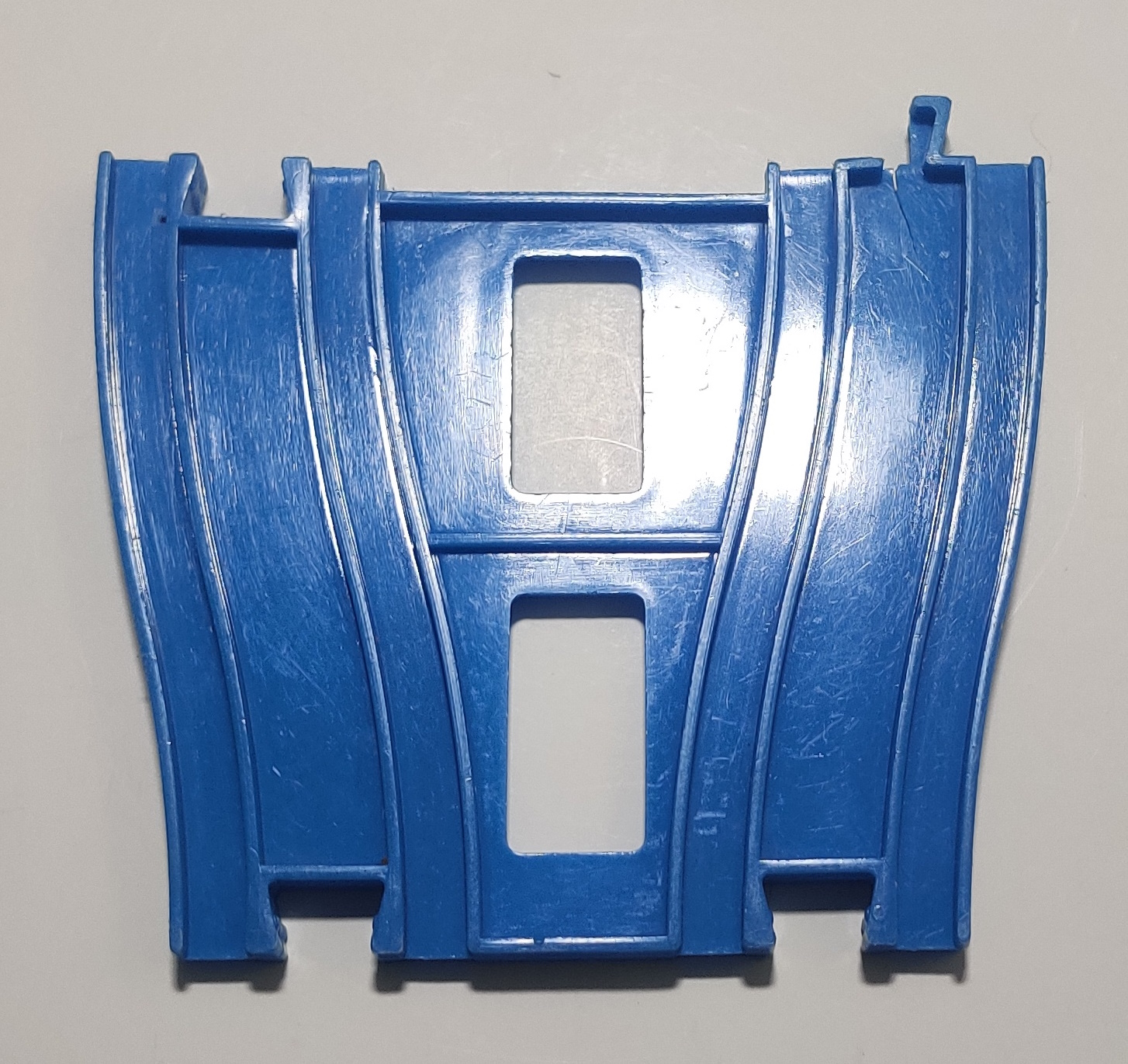
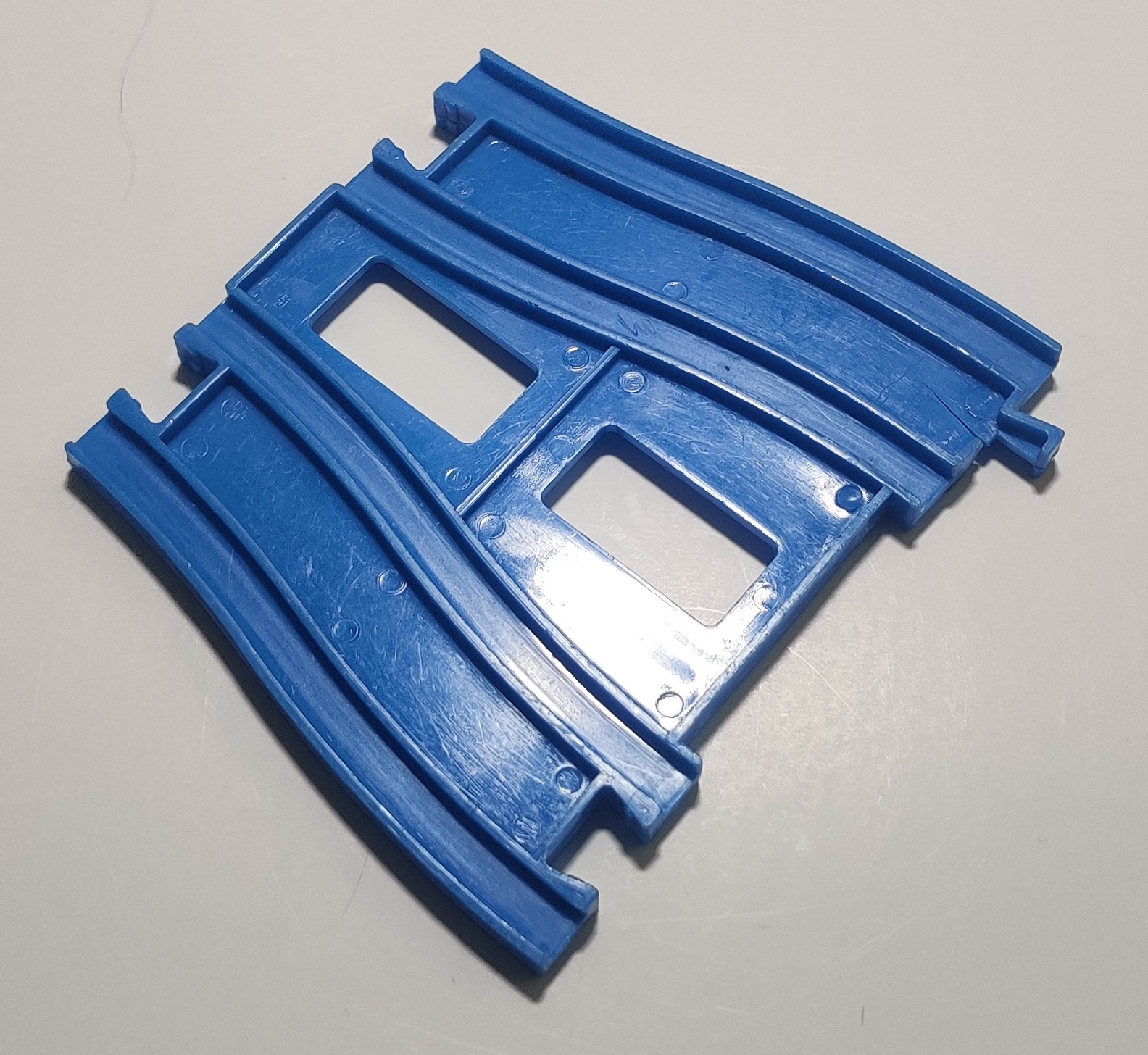
In 1969 this adaptor rail was developed to work with a new automatic transfer station and allow it to be connected to the recent Double Rail track standard. It was produced with both double concave and double convex connector on the double rail standard side with alternating connectors on the wider two lines to fit with the transfer station, Y type rail, and other 1960s and 1970s "wide" standard accessories.
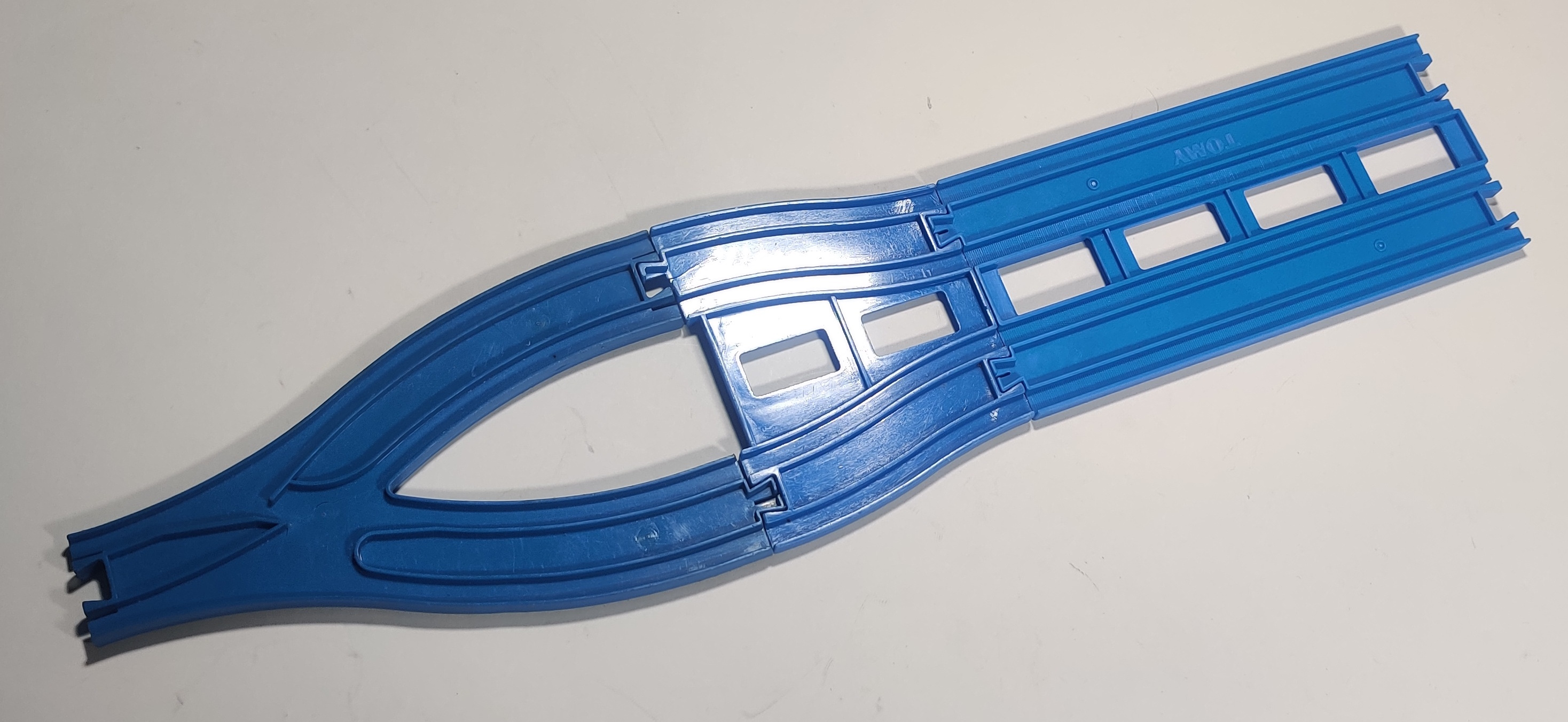
This rail saw some use throughout the later 1960s and earlier 1970s in the heyday of the old automatic transfer station and last appeared in a 1979 automatic transfer station set.